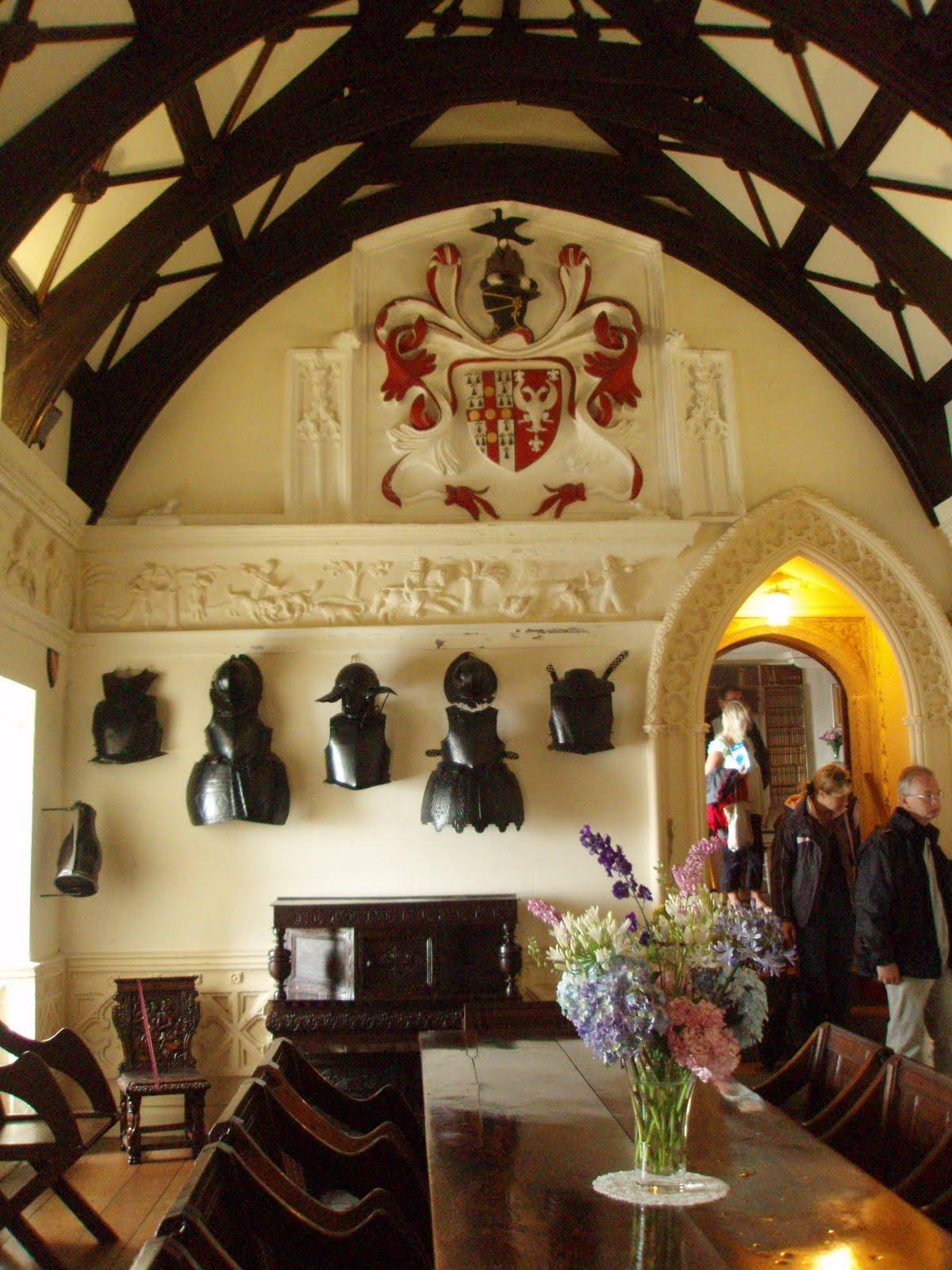Palm Trees and Chevy Chase in England?
When somebody told me some time ago that there are palm trees in England, I thought they were kidding.
However, during our recent trip though Cornwall and the “English Riviera” we could convince ourselves first hand that indeed there are palm trees growing there! And - Chevy Chase has an English (or rather Scottish) origin...
Minack Theatre
 A wonderful discovery in Porthcurno at the very tip of Cornwall was the Minack Theatre.
A wonderful discovery in Porthcurno at the very tip of Cornwall was the Minack Theatre.
The dream and vision of Rowena Cade, who started the construction in 1938, has now become a world famous open air theater. It could easily be mistaken for the remnant of the Roman occupation as it reminded me very much of the amphitheater in Taormina in Sicily with its spectacular view out to the sea.
We saw a wonderful performance of Oliver Twist during a sunny afternoon with sailboats in the background adding to the spectacle on the stage. Pictures of the subtropical garden can also be seen when clicking on the above link to this amazing theater!
Europeans and Languages
The many cars in the theater's parking area with French, German, Swedish, Dutch, Swiss, etc. number plates reminded us that most Europeans are quite able to communicate in more that one language, and their training starts early.
Right behind us on the seat terraces cut into the ledge, a German couple was seated with their 10-year-old daughter. We were quite impressed that the girl sat through the whole performance, without complaint, although, as her parents told us, she really did not speak any English (yet). She was following the action on the stage with great attention, with her parents, who were fluent in English, giving her brief explanations from time to time.
St. Michael's Mount
 Another interesting visit during our trip was to St. Michael's Mount, which not coincidentally shares with its French cousin both its tidal island characteristics and its conical shape: The island was given to the Benedictines, the religious order of Mont Saint-Michel in Normandy, France, by Edward the Confessor in the 11th century.
Another interesting visit during our trip was to St. Michael's Mount, which not coincidentally shares with its French cousin both its tidal island characteristics and its conical shape: The island was given to the Benedictines, the religious order of Mont Saint-Michel in Normandy, France, by Edward the Confessor in the 11th century.
The Mount, as locals call it, with its imposing castle, has gone through various ownerships, after Henry VIII abolished the priory. The St. Aubin family retained a 999-year lease after donating it to the National Trust in 1954, and one of the Lord's nephews lives in the castle and manages the island's operations. (We ran into him, as he hurried from his private quarters through the museum to the chapel!)
Chevy Chase on the Mount
We took a small boat over during high tide, visited the castle and walked back across the causeway during low tide.
The causeway and the harbor as well as the palm trees can be seen on the picture on the left looking out towards the town of Marazion, only a few miles from Penzance, the most westerly major town in Cornwall and home to the pirates in Gilbert and Sullivan's comic opera.
During our visit of the castle we were intrigued by the name of the "Chevey Chase Room" and one of the guides explained to us that the name comes from the plaster frieze depicting hunting scenes of the Ballad of Chevy Chase:
"The ballads tell the story of a large hunting party upon a parcel of hunting land (or chase) in the Cheviot Hills on Anglo-Scottish border - hence the term, Chevy Chase."
 There is actually another more linguistic explanation for the name, which can be found on the site of the Chevy Chase Historical Society:
There is actually another more linguistic explanation for the name, which can be found on the site of the Chevy Chase Historical Society:
"Chevy Chase may have been derived from the French word 'chevauchee' used in medieval Scotland and England to describe the horseback raids made into the ancient borderlands between the two countries.
Whatever its derivation, the name became the title of the English version of a ballad memorializing the famous Battle of Otterbourne which took place at Otterburn, in the Cheviot Hills, Northumberland, England, in August 1388, between the Scottish troops of James, Earl of Douglas and Englishmen led by Lord Harry “Hotspur” Percy, who challenged Douglas by mounting a deer hunt in the hills. The battle was stubborn and bloody, fought hand to hand in the dark -- and may have been fought hand to hand through the night. The Scots prevailed, but many troops were lost, and Douglas died."
For more information on St. Michael's Mount, go to Anglotopia.net:
"St Michael’s Mount is famous both for historical and mythical reasons. An important Benedictine priory used as a stronghold by a pretender king, held for the king during the Civil War before being taken by a parliamentarian Colonel, and machine-gunned during World War II, St Michael’s Mount has seen its share of real-life warfare. But the mount also has an aura of mystery they has made it the setting of the legend of Jack the Giant Killer and a filming location for various Dracula films. An iconic rocky island on the coast of Cornwall, St Michael’s Mount has many stories to tell and is very worth a visit if you’re in Cornwall."
